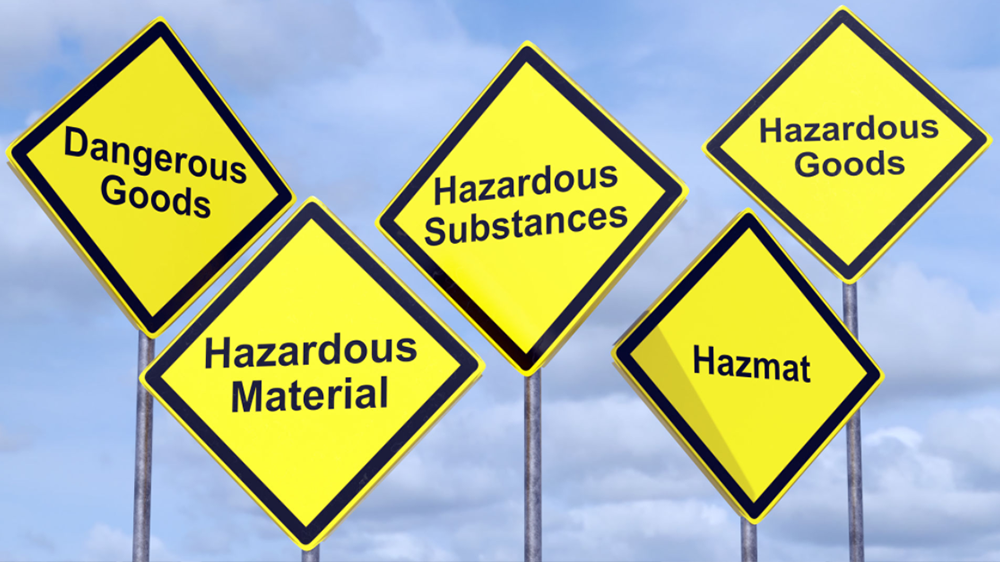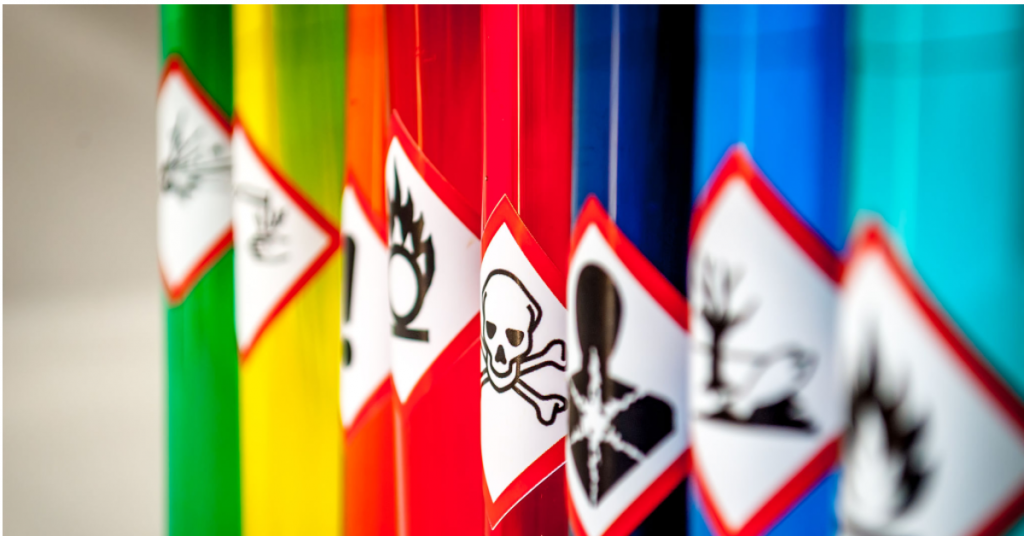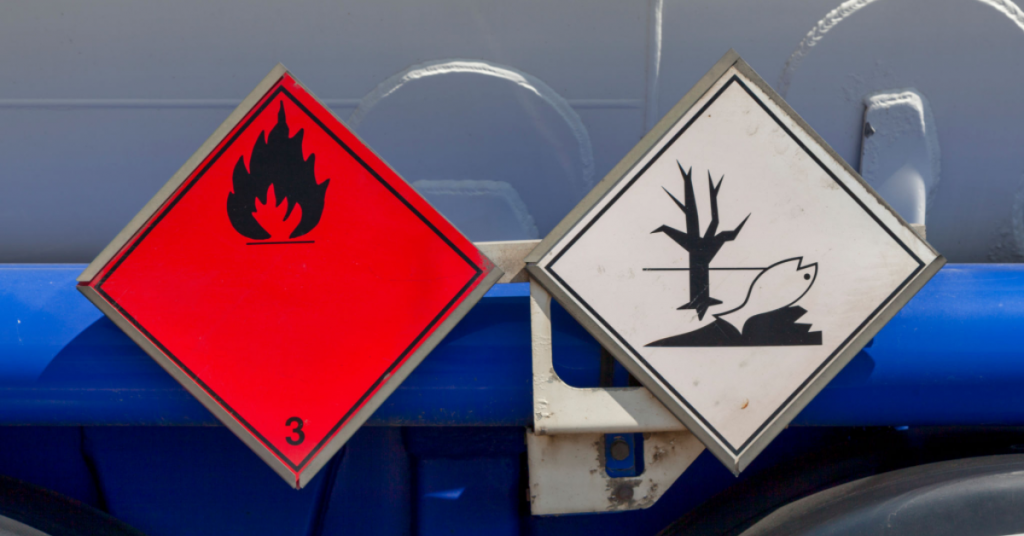Navigating HAZMAT Shipping: A Comprehensive Guide

Imagine you’re a buyer of cleaning products and need to arrange an international ship of a batch of corrosive chemicals.
These chemicals fall under the HAZMAT classification due to their potential risk to health, safety, and the environment. Shipping them requires specialized handling, proper packaging, and accurate documentation to ensure their safe transit.
This is just one example of the many scenarios where HAZMAT shipping regulations come into play.
In this comprehensive guide, we will delve into the intricacies of HAZMAT shipping, providing insights into the classification of hazardous materials, the regulations imposed by international bodies like the IATA, IMO, and DOT, and the potential consequences of non-complianc.
HAZMAT shipping refers to the transportation of hazardous materials that pose a potential risk to health, safety, property, or the environment.
These materials require specialized handling, packaging, and documentation to ensure their safe transit from one location to another.
HAZMAT shipping is regulated by various national and international agencies to mitigate risks and protect the well-being of people and the environment.

A wide range of products falls under the HAZMAT classification. These include, but are not limited to:
Flammable substances: Gasoline, propane, aerosol cans, and certain chemicals.
Corrosive materials: Acids, batteries, and certain cleaning agents.
Toxic substances: Pesticides, certain chemicals, and pharmaceuticals.
Explosives: Fireworks, ammunition, and blasting agents.
Radioactive materials: Medical isotopes, nuclear fuel, and certain industrial products.
Infectious substances: Biological samples, diagnostic specimens, and certain pharmaceuticals.
It is crucial for shippers to identify and classify these materials correctly to ensure proper handling and compliance with shipping regulations. The classification process involves understanding the hazards associated with the materials, including their physical, chemical, and toxicological properties.

The transportation of hazardous materials is governed by a complex web of regulations and guidelines. Key regulatory bodies include the International Air Transport Association (IATA), the International Maritime Organization (IMO), and the Department of Transportation (DOT) in various countries.
These regulations cover packaging, labeling, documentation, training requirements, and emergency response procedures. Shippers must understand and adhere to these regulations to ensure the safe and legal transport of HAZMAT goods.
The regulations often require the following:
Proper packaging
Hazardous materials must be packaged in containers that can withstand the hazards associated with the material being shipped. Packaging must be approved and meet specific standards to prevent leaks, spills, or reactions during transportation.
Clear labeling
Packages containing hazardous materials must be labeled with appropriate hazard labels, warnings, and symbols to communicate the potential dangers. Labels must indicate the specific hazard class and provide essential handling instructions.
Accurate documentation
Training and certification
Personnel involved in the handling, packaging, and transportation of hazardous materials must receive proper training and certification to ensure they are aware of the risks and know how to handle emergencies.
Training programs cover topics such as general awareness, function-specific training, safety protocols, and emergency response procedures.
Failure to comply with HAZMAT shipping regulations can have serious consequences. These may include:
Legal penalties, fines, and possible criminal charges
Non-compliance with regulations can result in significant fines or legal actions that can damage a company’s reputation and financial standing. The severity of penalties varies depending on the violation and the applicable laws in each jurisdiction.
Damage to the environment, public health, and property
Incorrect shipping of hazardous goods can lead to spills, leaks, or accidents, causing environmental damage, harm to public health, and property destruction. The release of toxic or flammable materials can contaminate soil, water bodies, and the air, posing risks to ecosystems, wildlife, and human populations.
Increased risk of accidents, fires, or explosions during transportation
Improper handling and packaging of hazardous materials can result in accidents, fires, explosions, and injuries to individuals involved in the shipping process or those in proximity to the transportation route.
The consequences can be severe, leading to injuries, loss of life, and extensive property damage.
Loss of reputation and trust among customers and stakeholders
Mishandling hazardous materials can lead to a loss of trust from customers, suppliers, and stakeholders, damaging the company’s reputation and potentially leading to a loss of business opportunities.
Companies that prioritize safety and compliance are more likely to build strong relationships with partners and customers.
Disruption of supply chains and delays in delivery
It is imperative for shippers to prioritize safety and compliance to avoid these negative outcomes. Investing in proper training, following regulations, and partnering with reliable service providers can significantly reduce the risks associated with HAZMAT shipping.

To navigate HAZMAT shipping successfully, consider the following best practices:
Disruption of supply chains and delays in delivery
Thoroughly understand the characteristics of the materials being shipped and ensure accurate classification to determine the appropriate handling and shipping requirements. Consult relevant regulations and guidelines, such as those provided by the IATA, IMO, and DOT, to ensure compliance.
Alternatively, you can seek assistance from a professional HAZMAT shipping service like DIDADI.
Use appropriate packaging and labeling according to regulatory standards
Use appropriate packaging and labeling according to regulatory standards
Accurately document the hazardous materials being shipped, including the proper identification, quantities, and emergency response information. Ensure that shipping papers and manifests are complete, accurate, and accessible to relevant personnel and authorities.
Follow specific guidelines for each mode of transportation (air, sea, land)
Understand and comply with the specific regulations and requirements for each mode of transportation, as they may differ based on the risks associated with the specific transport method.
Be aware of any restrictions or limitations that may apply to the shipment based on the chosen mode of transportation.
Regularly review and update procedures to stay compliant with changing regulations
Stay informed about the latest updates to HAZMAT shipping regulations and adjust procedures accordingly to maintain compliance. Monitor changes in the classification of hazardous materials and review packaging, labeling, and documentation requirements periodically.
By following these best practices, shippers can enhance safety, minimize risks, and ensure compliance with HAZMAT shipping regulations.
As a reputable 3PL (third-party logistics) company, DIDADI can be an invaluable partner when it comes to shipping hazardous goods. With our expertise and experience in handling hazardous materials, DIDADI offers a range of specialized services that ensure the safe and compliant transportation of these goods.
We understand the intricacies and regulations surrounding HAZMAT shipping. By working with DIDADI, customers can benefit from our regulatory compliance expertise, ensuring that all necessary protocols and guidelines are followed throughout the shipping process.
Our advanced tracking and monitoring systems provide an added layer of security and visibility throughout the shipping process. You can stay informed about the status and location of your hazardous goods in real-time, enabling to have the ability to respond swiftly to any potential issues or emergencies.
Shipping hazardous materials can be a challenging and costly endeavor, given the multitude of rules and regulations involved. Therefore, it is crucial to ensure that all the necessary paperwork is in order and thorough research is conducted before embarking on the shipping process.
An alternative option is to collaborate with a third-party logistics (3PL) provider specializing in handling hazardous materials during order fulfillment. Feel free to reach out to our team below for further information.
Recommended Reading















